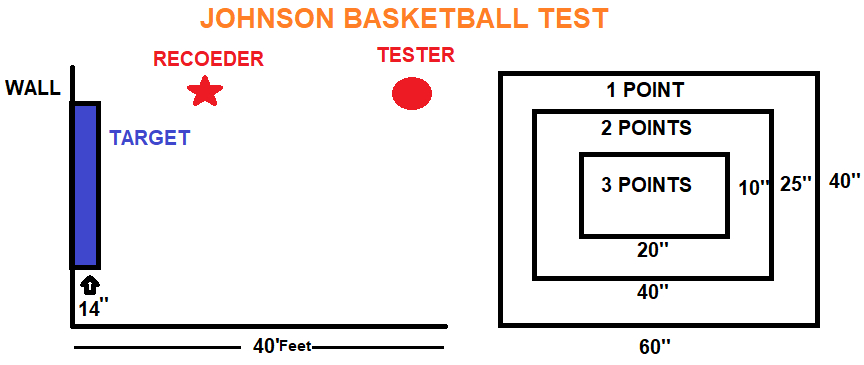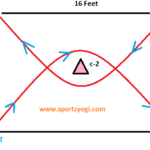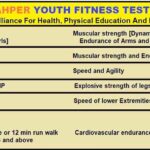JOHNSON BASKETBALL TEST
Johnson basketball test battery is the oldest but most used basketball skill test. It was created in 1934 by L. William Johnson during his research work for a master thesis in his course. It consists of seven test items, this basketball test battery consists of three items of basic skills and four items of potential basketball ability which are described below:-
Read more about- different types of passes in basketball
Basic Basketball Skill Test Items
- Field goal speed test
- Basketball Throw for Accuracy
- Basketball Dribble Test
Potential Basketball Ability Test Items
- Footwork
- Jump and reach
- Run dodging
- Iowa Modification of the Brace Rest
JOHNSON BASIC BASKETBALL SKILL TEST ITEMS:
To establish the validity of the Basketball Test Battery, L. William Johnson created two groups of 180 high school basketball boys, which he divided into GOOD and POOR. The good boy’s group included basketball players who represented on school basketball teams and the boy’s POOR group included basketball players who were not selected to represent their school basketball team.
Read more about- AAHPERD basketball test
There were 50 boys in the first good group and 130 boys in the second poor group. A validity coefficient of 0.88 was reported between the test scores of the boy’s group from both groups. They have reported the reliability and validity coefficients of the Basic Basketball Test Item Battery as 0.93 and 0.84, respectively.
The three items for the basic basketball skill test in the Johnson Basketball Battery are summarized below:-
JOHNSON FIELD GOAL SPEED TEST – The tester asks the basketball player to stand at any position under the basket and the maximum number of baskets he needs to make in 30 seconds which provides a score for this test. This item measures the player’s ability to consistently score field goals as quickly as possible under time pressure.
JOHNSON BASKETBALL THROW FOR ACCURACY [Passing Skill] – This test measures the ability of a consistently accurate throw and the strength of the shoulder. In this test, a circular or rectangular target is placed on the wall which is installed 14 inches above the ground. The player is placed 40 feet away from the target and is asked to hit the ball in the center. The player can use the hook pass or overhand pass method to hit the target with the ball.
Read more about- Types of human body [somatotypes]
Size of rectangle
- Inner rectangle = 20’’ ×10’’
- Middle rectangle= 40’’ ×25’’
- Outer rectangle= 40’’ ×60’’
- Height of the target= 14’’
size of circle
- Inner circle = 18” diameter [9” radius]
- Middle circle = 38” diameter [19” radius]
- outer circle = 58” diameter [58” radius]
- Height of the target = 36” diameter


Scoring – Three points are awarded for each hit in the middle or line of the inner rectangle or circle; two points are awarded for each hit in the middle rectangle and its line. A total of ten trials, scores, are used to evaluate the Basketball Passing Test item of the Battery.
Position of the player, examiner, and recorder – Player stands immediately behind the line 40 feet from the target, the examiner stands 5 to 10 feet within the line 40 feet to the player’s right, and the recorder stands approximately from the target Stands 4 to 5 feet away on the right.
Read more about- AAHPER youth fitness test
JOHNSON BASKETBALL DRIBBLE TEST – This basketball test item has been designed with the aim of measuring the ability to control the ball and the level of agility of a player.
The player has to cover the maximum distance in 30 seconds while zigzag dribbling around the obstacle. 4 cones or obstacle are placed in a straight line at a distance of six feet. The first cone or obstacle is to be placed at a distance of 12 feet from the starting line which is 6 feet wide. The player must start dribbling from one end of the starting line and reach the opposite side of the starting point, dribbling around all the cones or obstacles.


Scoring – The score is equal to the number of zones covered in 30 seconds. In short, the player gets one point for each obstacle he crosses. However, the two sides of the final constraint and the starting line mark provide two distinct points because they each represent the boundaries of the two.
The above three Johnson Basketball Basic Skill Test items constitute the Basketball Skill Test Battery and the three scores added together constitute the Johnson Basketball Test Battery score, which can be compared directly between basketballers’ scores or after converting to T scores. Basketball Skills Test Battery criteria evaluating performance skills are also reported overseas.
JOHNSON POTENTIAL BASKETBALL ABILITY TEST ITEMS- Four test items namely Footwork, Jump and Reach, Dosing Run, and Lowa Brace Test are performed without any ball-handling exercise. The reported reliability and validity coefficients for this battery are 0.89 and 0.88, respectively. Since the Johnson Potential Basketball Ability Test items are not specific to basketball, they do not use basketballs or simulate any basketball playing conditions. These are meant to evaluate the normal body movements required to play basketball, so they are considered obsolete and no longer in use.





